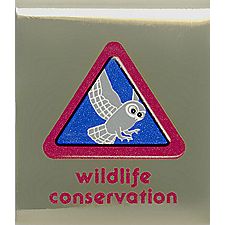Webelos Scouts that earn the Wildlife Conservation Belt
Loop while a Webelos Scout
also satisfy requirement 13 for the
Naturalist Activity Badge.
Requirements
Tiger Cubs, Cub Scouts, and Webelos Scouts may complete requirements in a family, den, pack, school, or community environment. Tiger Cubs must work with their parents or adult partners. Parents and partners do not earn loops or pins.
Belt Loop
Complete these three requirements:
- Explain what natural resources are and why it's important to protect and conserve them.
- Make a poster that shows and explains the food chain. Describe to your den what happens if the food chain becomes broken or damaged.
- Learn about an endangered species. Make a report to your den that includes a picture, how the species came to be endangered, and what is being done to save it.
Academics Pin
Earn the Wildlife Conservation belt loop, and complete five of the following requirements:
- Visit a wildlife sanctuary, nature center, or fish hatchery.
- Collect and read five newspaper or magazine articles that discuss conservation of wildlife and report to your family or den what you learn.
- Learn about five animals that use camouflage to protect themselves.
- Make a birdbath and keep a record for one week of the different birds that visit it.
- Make a collage of animals that are in the same class: fish, amphibians, reptiles, birds, or mammals.
- Make a plaster cast of an animal track. Show it to your den.
- Visit with a person who works in wildlife conservation, such as a park ranger, biologist, range manager, geologist, horticulturist, zookeeper, fishery technician, or conservation officer.
- Visit a state park or national park.
- Participate in an environmental service project that helps maintain habitat for wildlife, such as cleaning up an area or planting trees.








